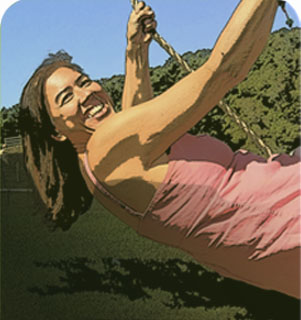Nature Awareness School in Catalina State Park, April 19, 2017

(from Nature journal April 19, 2017)
Robbie and I have attended several bird walks at Catalina State Park (Arizona) this year. We meet with the group usually by 7:30 a.m. and walk through the mesquite forests lining the wash of the park. One morning in March there were so many birds it took us 45 minutes just to move about 100 feet. This park in addition to being a spiritual sanctuary to the Ho’okum people of long ago, is also a key stop in the migration patterns of hawks, wrens, sparrows, flycatchers and other birds.
“Mom! Mom! Look a vermillion flycatcher!”
The bird group rustled in appreciation. “Yes, and there is the female!”, said someone in the group.
Robbie is the only child in the group and they are kind to him, most of them grandparents, all of them my age or older. Collectively, binoculars move up to 30 some pairs of eyes and everyone sighed and whispered appreciatively. “That one is my favorites mom”, said Robbie.
To see a picture of a vermillion fly catcher, look here.
Mary Ellen, an ornithologist and volunteer bird guide for most of our walks this winter, pointed out more birds:
Phyrrhuloxia (desert cardinal)
Grosbeaks
Rufus wing sparrows with their red line on the head and rufus brown eye liner
Gila woodpeckers
Cactus wrens
Lesser gold finches
Lucy’s warblers
Phenopepia with their shiny black heads
3 kinds of Towhee’s: Abert, Canyon and Green tailed
Thrashers
To see the pictures of these birds, see audobon.org and the cornell university website:
www.allaboutbirds.org.
Robbie with Mary Ellen.

We watched a male cardinal feed his mate, a brown very active female, bouncing up and down on tree branches close to the ground.
Mary Ellen also told us about Cow birds – an interesting type of black bird that are “parasitic nesters”. Instead of building nests, they lay their eggs in other birds’ nests such as grosbeaks and buntings. The other birds will feed and raise the cowbird babies as their own. Because the cowbirds babies are bigger than the other birds, very often the other baby birds will die from starvation.
When a Gila landed on a large Saguaro cactus on the immediate horizon, Mary Ellen pointed out its blossoms. Saguaro bloom in May and June, a major food source for the birds and fauna of the area, to include at one time humans who used it for their sweetener, to eat as fruit, and to dye color and make designs on pottery.
At a certain point of the trail, Robbie said, “Mom where is the hummingbird?”. There is a broad billed hummingbird that is always at the curve of the nature trail, black bill with a green body, tiny and beautiful. As if on cue, he (or she) buzzed in the branches above us. He sat and looked at us for awhile, buzzing to other trees but always within a 100 foot or so space. They are territorial, creatures of habit with a narrow definition of place and home which is nice for us as he is always there to meet and greet us.
After about 45 minutes, I could feel Robbie’s restlessness. It was getting very hot, already in the 80’s and the sun bright with no moisture in the air. We thanked Mary Ellen and the group and excused ourselves.
The Saguaro are starting to bloom, see the center cactus with little tufts in each branch.

We talked about what we saw and learned.
Mom: “Robbie, why are birds important to the environment here?”
Robbie: “Well mom, the birds don’t let the insect population grow too big.”
Mom: “Yes, there are certainly a lot of beetles and other little critters. Anything else?”
Robbie: “Mom, you know…do you remember in Wyoming how the wolves keep the elks from eating all the grasses? There are different circles of life and the birds are part of that.”
Mom: “How?”
Robbie: “Well, so you see, the wolves will eat the elks. Other small mammals eat other things and eagles come to eat them. ”
Mom: “What about seeds?”
Robbie: “Oh yes, they poop those out and then things grow. That is the other cycle of life.”
Our friend the broad billed hummingbird.

We got back to our van marveling at the sun, the whooping tweeting birds, and the hunger rumbling in our bellies. “Let’s eat!” And off we went back to our campsite, ready for the next cycle of life to continue.


